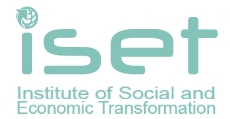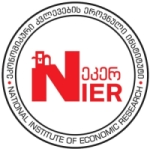Biomimicry element application in the interior design product development
Abstract
Introduction. Environmental issues have different social and economic causes. The demand on natural raw materials has led to the disappearance of different animal species, yet human waste is one of the most important elements of global and local pollution. According to the results of the survey, 56% of those surveyed in Latvia have recognised that they prefer to choose those brands that are in favour of a clean environment. Sustainability and environmentally friendly farming are becoming more and more wide spread and topical, so the authors want to explore whether biomimicry used in a product development, increases the opportunities for more sustainable products.
Aim and tasks. The main aim of this research is to create a framework for using biomimicry to manufacture new interior design products. The interior design project is needed to improve the quality of life in a society. The intention for this research is to help to develop the quality of long-term solutions for the society's daily life in accordance with nature. An interior design, which is created close to natural processes using all possibly available materials and products on the basis of biomimicry methods.
Results. This article explores the ways in which biomimicry techniques, based on the Design Spiral and Janine Benyus Biomimicry Design Lens Principles of Life, can be combined with the design process of an interior design, thereby to create a framework with the help of which a designer works and creates a sustainable interior design. The interior design is a complex process, it is more than just the location of objects in a room or just a decorative supplement that covers the structure of a building, it is a necessary dimension that actually transforms a simple architectural space into a habitable place with a desired order, stability, and individuality.
Conclusions. The article proposes a basis for the application of biomimicry in the development of an interior design product. The main difference between an interior design and the methodology of biomimicry is that in an interior design process the main question needs to be biologized from “What do I want to create?” to ”What do I want to achieve with my design?”. Also, in an interior design process there are phases to follow to create a design, like there are phases to create in biomimicry based products or processes. The most important points in the creation of the framework are the milestones at which the process of designing interior design should begin to be biologized. Changing the order of the Design Spiral phases and adjusting it to the designing points of an interior design, a system can be created in which all stages of the Design Spiral are connected with the interior design process.Milestones show the progress of a project where each milestone has the actions or activities to be performed, respectively.
Keywords:
product development, biomimicry, interior design products, Design Spiral.References
2. Olaizola, E., Morales-Sánchez, R. & Eguiguren Huerta, M. (2021). Biomimetic Leadership for 21st Century Companies. Biomimetics. 6(3), 47.
3. Araque, K., Palacios, P., Mora, D. & Chen Austin, M. (2021). Biomimicry-Based Strategies for Urban Heat Island Mitigation: A Numerical Case Study under Tropical Climate. Biomimetics. 6(3), 48.
4. Niklas, K.J. & Walker, I.D. (2021). The Challenges of Inferring Organic Function from Structure and Its Emulation in Biomechanics and Biomimetics. Biomimetics. 6(1), 21.
5. Scerrato, D., Bersani, A.M. & Giorgio, I. (2021). Bio-Inspired Design of a Porous Resorbable Scaffold for Bone Reconstruction: A Preliminary Study. Biomimetics. 6(1),18.
6. Islas-García, E., Ceccarelli, M., Tapia-Herrera, R. & Torres-SanMiguel, C.R. (2021) Pipeline Inspection Tests Using a Biomimetic Robot. Biomimetics. 6(1),17.
7. Rodríguez, I., Gautam, R., Tinoco, A.D. (2021). Using X-ray Diffraction Techniques for Biomimetic Drug Development, Formulation, and Polymorphic Characterization. Biomimetics. 6(1), 1.
8. You Matter (2020, February 13). Biomimicry definition: What is it, Examples and Areas of Application. https://youmatter.world/en/definition/definitions-what-is-biomimicrydefinition-examples/
9. Biomimicry (2021, June 1). Biomimicry 3.8. https://biomimicry.net
10. Bhushan, B. (2009, ni). Biomimetics. https://royalsocietypublishing.org/doi/pdf/10.1098/rsta.2009.0026
11. Eadie, L. & Ghosh, T.K. (2011). Biomimicry in textiles: past, present and potential. An overview. Journal of the Royal Society Interface, 8(59), 761-775.
12. Benyus, J. (1997). Biomimicry. Ni: Harper Collins e-books
13. Romei, F. (2008). Leonardo Da Vinci. Spain: The Oliver Press.
14. Hayes, S., Desha, C. & Baumeister, D. (2020). Learning from nature—Biomimicry innovation to support infrastructure sustainability and resilience. Technological Forecasting and Social Change, 161, 120287.
15. Pedersen Zari, M. (2018). Regenerative Urban Design and Ecosystem Biomimicry. Oxon, UK: Routledge.
16. Baumeister, D., Pedersen Zari, M. & Hayes, S. (2020). Biomimicry: An Opportunity for Buildings to Relate to Place. In Pedersen Zari, M., Connolly, P., Southcombe, M. (Eds.) Ecologies Design: Transforming Architecture, Landscape, and Urbanism. Oxon, UK: Routledge, 85–95.
17. Pedersen Zari M. (2021). Biomimetic Urban and Architectural Design: Illustrating and Leveraging Relationships between Ecosystem Services. Biomimetics, 6(1), 2.
18. Hayes, S., Desha, C. & Gibbs, M.T. (2019). Findings of Case-Study Analysis: System-Level Biomimicry in Built-Environment Design. Biomimetics, 4 (1), 73.
19. Buck, N.T. (2017). The art of imitating life: The potential contribution of biomimicry in shaping the future of our cities. Environment and Planning B Planning and Design In Press, 44, 120–140.
20. Yeang, K. (2020). Ecological Design as the Biointegration of a Set of ‘Infrastructures’: The ‘Quatrobrid’ Constructed Ecosystem. In Pedersen Zari, M., Connolly, P., Southcombe, M. (Eds.) Ecologies Design: Transforming Architecture, Landscape, and Urbanism. Oxon, UK: Routledge, 44–48.
21. Peeks, M. & Badarnah, L. (2021). Textured Building Façades: Utilizing Morphological Adaptations Found in Nature for Evaporative Cooling. Biomimetics, 6(2), 24.
22. Badarnah, L. (2017). Form follows environment: Biomimetic approaches to building envelope design for environmental adaptation. Buildings 7, 40.
23. Heisel, F. & Hebel, D.E. (2019). Pioneering Construction Materials through Prototypological Research. Biomimetics, 4(3), 56.
24. Biomimicry 3.8.a (2021, June 1). Design Lens. https://biomimicry.net/the-buzz/resources/biomimicry-designlens/
25. Hastrich, C. (2021, June 1). Activity. https://www.linkedin.com/in/carl-hastrich-887986b/?originalSubdomain=ca
26. De Luca, D. (2016, June 14). The power of the Biomimicry Design Spiral. https://biomimicry.org/biomimicry-design-spiral/
27. Aziz, M.S. & El sherif, A.Y. (2016). Biomimicry as an approach for bio-inspired structure with the aid of computation. Alexandria Engineering Journal, 55 (1), 707-714.
28. du Plessis, A., Babafemi, A.J., Paul, S.C., Panda, B., Tran, J.P. & Broeckhoven,C. (2021). Biomimicry for 3D concrete printing: A review and perspective. Additive Manufacturing, 38 (ni), ni. https://www.sciencedirect.com/science/article/abs/pii/S2214860420311957
29. Hayes, S., Desha, C. & Baumeister, D. (2020). Learning from nature – Biomimicry innovation to support infrastructure sustainability and resilience. Technological Forecasting and Social Change, 161 (ni), ni. https://www.sciencedirect.com/science/article/pii/S0040162520311136
30. Mikelsone, E., Atstaja, D., Koval, V., Uvarova, I., Mavlutova, I., & Kuzmina, J. (2021). Exploring Sustainable Urban Transformation Concepts for Economic Development. Estudios de Economia Aplicada, 39(5). https://doi.org/10.25115/eea.v39i5.5209
31. Civča D., Atstāja D., Koval V. (2021). Business continuity plan testing methods in an international company. Knowledge management competence for achieving competitive advantage of professional growth and development (p. 341-365). Riga, Latvia: BA School of Business and Finance. http://doi.org/10.5281/zenodo.4454180
If the article is accepted for publication in the journal «Economics. Ecology. Socium» the author must sign an agreementon transfer of copyright. The agreement is sent to the postal (original) or e-mail address (scanned copy) of the journal editions.






















